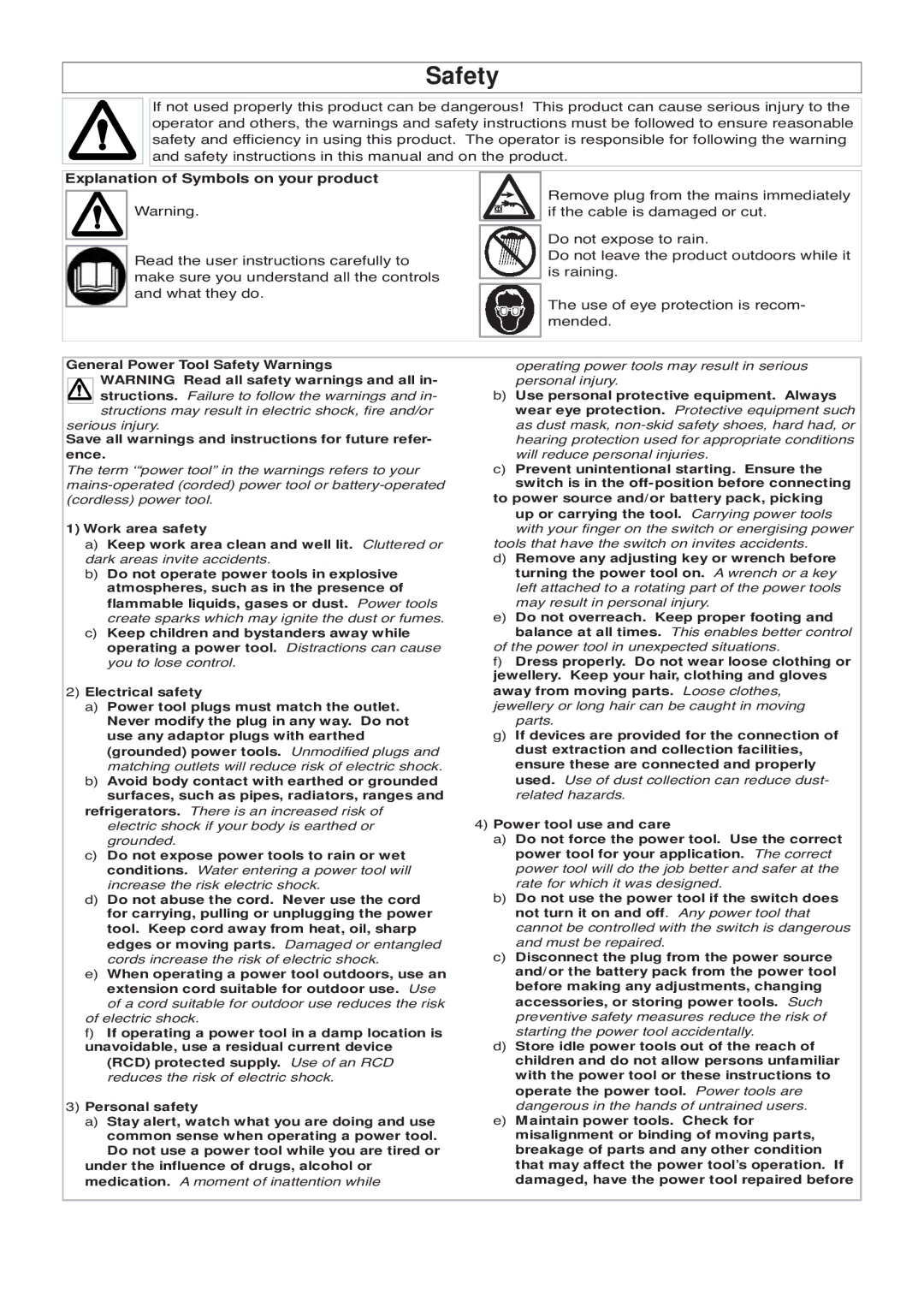EASICUT 500, 420 specifications
The Flymo EASICUT 500 and EASICUT 420 are innovative cordless electric hedge trimmers designed for maintenance and care of hedges and shrubs in residential gardens. These models are recognized for their efficiency, maneuverability, and user-friendly features, making garden upkeep a less daunting task.One of the standout features of the Flymo EASICUT 500 and EASICUT 420 is the lightweight design, allowing users to handle the trimmers with ease even during extended periods of use. Weighing significantly less than many traditional hedge trimmers, both models provide comfort and reduced fatigue, making them ideal for both professional landscapers and home gardeners.
Both trimmers are equipped with laser-cut precision blades, which ensure a clean and smooth cut. This not only enhances the appearance of hedges and shrubs but also promotes healthier plant growth by preventing jagged edges. The EASICUT 500 boasts a blade length of 50 cm, while the EASICUT 420 has a slightly shorter 42 cm blade, catering to different garden sizes and trimming requirements.
The trimmers feature ergonomic handles designed for optimal grip and control. This thoughtful design reduces the likelihood of strain and discomfort during operation. Furthermore, they include a safety switch that ensures the device only operates when intended, enhancing user safety.
Powering the Flymo EASICUT series is an efficient battery system that delivers impressive run time with a quick charging capability. This cordless technology frees users from the hassle of tangled cords, allowing for unrestricted movement around the garden. The EASICUT series also has a low noise operation, making it perfect for use in residential areas without disturbing neighbors.
Additionally, the EASICUT models are designed with a protective blade guard, ensuring safe storage and transportation. This feature further extends the longevity of the blades by preventing accidental damage.
Overall, the Flymo EASICUT 500 and EASICUT 420 are excellent choices for those seeking efficient, lightweight, and user-friendly hedge trimmers. With their advanced technology, safety features, and precision cutting capabilities, these trimmers are well-suited to help you maintain a beautiful and healthy garden with ease.

